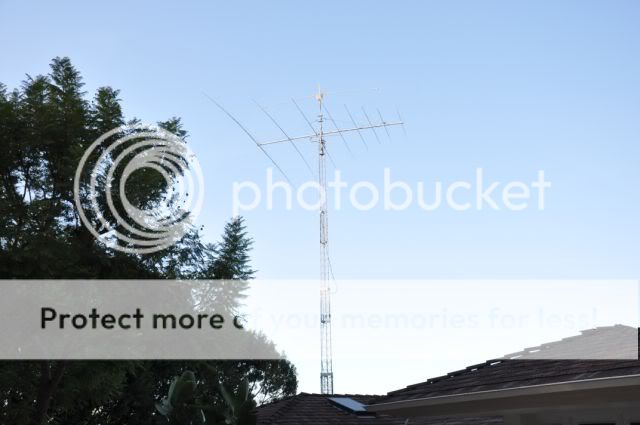I dialed around the 15 meter band today and heard several weak stations working the band. I decided to give it a try with both my Cushcraft R6000 6m-20m vertical and my multi-band inverted V dipole, both with the feed point at 40 feet. After calling CQ for a bit using 1KW with no luck, I spun the dial and found another local, W6TA also working 15 meters. The difference? He was actually working 15 meters into Europe from L.A., while I was not. I couldn't even hear the stations he was easily working. The antenna he was using: A 40-10 meters log periodic at 110 feet:

He's got a real nice station, check out more pics at: Pictures by W6TA - Photobucket
It sure makes a difference to have a great antenna

He's got a real nice station, check out more pics at: Pictures by W6TA - Photobucket
It sure makes a difference to have a great antenna



